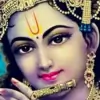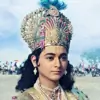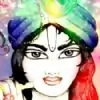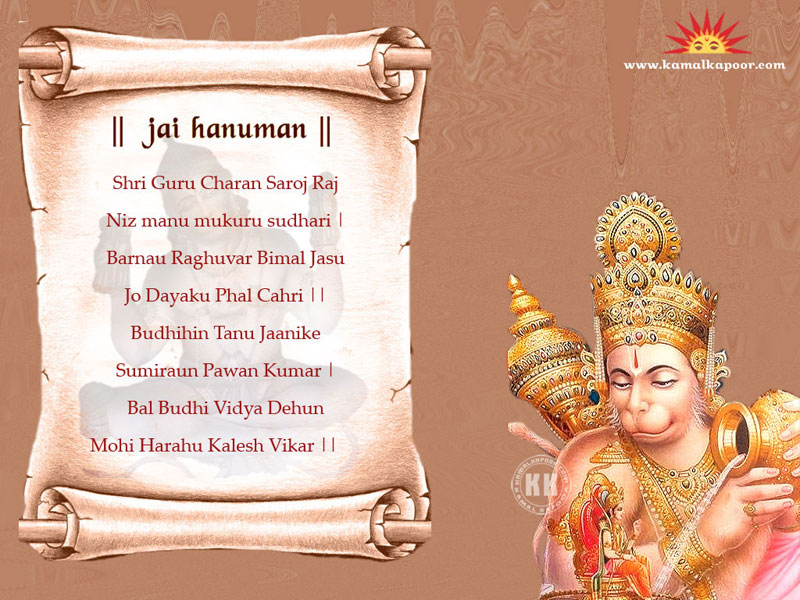Hanuman and Yoga

Hanuman as Yogachara |
If yoga is the ability to control one's mind then Hanuman is the quintessential yogi having a perfect mastery over his senses, achieved through a disciplined lifestyle tempered by the twin streams of celibacy and selfless devotion (bhakti). In fact, Hanuman is the ideal Brahmachari (one who follows the path of Brahma), if ever there was one.
He is also a perfect karma yogi since he performs his actions with detachment, acting as an instrument of destiny rather than being impelled by any selfish motive.
Hanuman - The First to Teach Pranayama and the Inventor of the Surya Namaskar
Pranayama is the ability to control one's breath so that the inhalation and exhalation of air is rhythmic. Vayu, the god of air and wind, first taught pranayama to his son Hanuman, who in turn taught it to mankind.
The Surya Namaskar (salutation to the sun) too, was devised by Hanuman as a greeting for his teacher Surya.
Hanuman and Sorcery
The villain of the epic Ramayana was the mighty demon Ravana. When he carried away Sita, her aggrieved husband Rama, accompanied by Hanuman and a massive army of monkeys laid siege on Lanka, the capital of Ravana's empire. As the battle progressed, the demon lost all his brothers and sons and it became clear that he was headed towards defeat. Finally, he sent for his only surviving son Mahiravana, a powerful sorcerer who ruled over the underworld (patala loka). Mahiravana was a great devotee of Goddess Kali from whom he had obtained vital occult secrets. Initially Mahiravana did not wish to join the fight against Rama since he felt the latter's cause to be just. But understanding his weakness for ritual magick Ravana addressed him thus: "Think of the powers the goddess Kali will grant you when you offer to her the heads of two handsome and virile youths like Rama and Lakshmana." Needles to say, Mahiravana agreed.
The great sorcerer Mahiravana managed to kidnap both Rama and his brother Lakshmana while they were sleeping. He left behind, in place of their bed, a dark trail stretching deep into the bowels of the earth. Hanuman immediately dived into the tunnel and made his way to patala, the subterranean kingdom of Mahiravana. There he found the two brothers tied to a post, their bodies anointed with mustard oil and bedecked with marigold flowers, ready to be sacrificed. Near them, Mahiravana was sharpening the sacrificial blade and chanting hymns to invoke the goddess.

Sri Vaibhav Hanumana Yantra |
Hanuman taking the form of a bee whispered into Rama's ear, "When Mahiravana asks you to place your neck on the sacrificial block, inform him that being of royal lineage you have never learned to bow your head. Tell him to show you how." Mahiravana fell for the trap. No sooner had he bowed his head in the ritually prescribed manner than Hanuman regained his form, seized the blade, and decapitated the sorcerer. Thus did Hanuman turn the tables and sacrificed the demon himself to Mother Goddess Kali. Impressed, she made Hanuman her doorkeeper and indeed many temples of the goddess are seen to have a monkey guarding their doorways. Further, to this day, Hanuman is invoked in any fight against sorcery, and amulets and charms depicting him are therefore extremely popular among devotees.
Why Idols of Hanuman are Red in Color

Rama Durbar |
After safely reaching Ayodhya, Rama in no time settled down to a happy life of kingship and matrimony. Hanuman continued to be a constant and devoted companion with an unrestricted access to Rama.
Life went on normally. Many delightful episodes from this period establish Hanuman as the ultimate bhakta, and shed much light on his unique personality.

Hanumana |
Every morning Hanuman would observe Sita put a red mark on her forehead and smear the parting of her hair with vermilion powder, enacting a ritual which is the exclusive prerogative of married women in India. Being naturally of a curious bent of mind he asked her the reason behind this daily ritual. "For the well-being of my husband," replied she. Hanuman, ever the humble well-wisher of his chosen lord wondered: "If a virtuous woman like Sita has to apply vermilion in this manner for the good of Lord Rama, I, a mere monkey, need to do more." Thus thinking, he took a bowlful of the paste and smeared his whole body with it. Needless to say, both Rama and Sita were moved by the purity of Hanuman's heart. Since then, idols of Hanuman are colored a rich vermilion red.
Why Hanuman is Shown Tearing Open his Own Chest

Hanuman Tears Open His Chest |
Once Sita gave Hanuman a necklace of pearls. After a while, the residents of the city observed him breaking the necklace and inspecting each pearl minutely. Intrigued they asked him the reason. "I am looking for Rama and Sita," replied Hanuman. Laughing at his apparent naivety the spectators pointed out to him that the royal couple was at the moment seated on the imperial throne. "But Rama and Sita are everywhere, including my heart" wondered aloud the true bhakta. Not understanding the depth of his devotion, they further teased him: "So Rama and Sita live in your heart, can you show them to us?" Unhesitatingly, Hanuman stood up and with his sharp talons tore open his chest. There, within his throbbing heart, the astonished audience were taken aback to find enshrined an image of Rama and Sita. Never again did anyone make fun of Hanuman's devotion.
The Five-Headed (Panchamukhi) Hanuman - An Intriguing Image

Madhavacharya (1197-76) |
Vaishnavas believe that the wind-god Vayu underwent three incarnations to help Lord Vishnu. As Hanuman he helped Rama; as Bheema he assisted Krishna; and as Madhavacharya (1197-76), he founded the Vaishnava sect.

Hanuman, Humble and Powerful |
It is interesting to note that in his youth Madhavacharya distinguished himself in physical exercises and field games and is said to have had a wonderful physique. Truly, physical prowess is an integral aspect of the cult of Hanuman and he is the patron deity of wrestlers and body-builders. He is most popularly referred to as 'Vajra-anga-Bali,' meaning the Powerful One (bali) with a body (anga) hard as a thunderbolt (vajra).

Five-Headed Hanumana |
The Vaishnavas evolved a syncretic form of Hanuman with five heads and ten arms, incorporating in the composite image five important Vaishnavite deities:
At the center a monkey's face (Hanuman).
A lion's visage representing Narasimha gazing southwards.
An eagle's head symbolizing Garuda facing west.
A boar head of Varaha (north).
A horse's face for Hayagriva (facing the sky).
Each head signifies a particular trait. Hanuman courage and strength, Narasimha fearlessness, Garuda magical skills and the power to cure snake bites, Varaha health and exorcism and Hayagriva victory over enemies.
The Spiritual Significance of Hanuman
The goal of all mystical yearning is union of the individual soul with the universal soul. In the Adhyatma ('spiritual') Ramayana, a Sanskrit text dating from the fourteenth or fifteenth century, Sita represents the individual (jiva-atma), which has separated from the universal (param-atma) symbolized by Rama. In a beautiful interpretation, Hanuman here is said to personify bhakti, which annihilates the 'ahankara' or ego (Ravana), and re-unites the two.
The Enduring Relevance of Hanuman
In Hindu symbolism, a monkey signifies the human mind, which is ever restless and never still. This monkey-mind happens to be the only thing over which man has absolute control. We cannot control the world around us but we can control and tame our mind by ardent discipline. We cannot choose our life but we can choose the way we respond to it. Hanuman, when he was a child, was tempted by the sun and he rushed towards it thinking it to be a delectable fruit. On his way however, he was distracted by the planet Rahu and changed his path. Thus Hanuman is the temperamental human intellect, which is unquiet and excitable. It is only by diverting it to the path of pure bhakti (devotion), that it can be made aware of its profound and silent essence.
According to the Hindu point of view, there is no objective world 'out there.' The whole manifested world is a subjective phenomenon created by our own selves. We - as humans - have the unique ability to condition our minds. In other words, we have the power to change the way we perceive life. And by changing our perceptions of life, we have the power of changing our world. When Hanuman enters Rama's life, he changes Rama's world. He transforms a crisis (the loss of Sita) into an opportunity (rid the world of Ravana). He transforms a victim into a hero.
Thus, Hanuman is no ordinary monkey. While embarking on the search for Sita, the monkeys were confronted by the vast ocean lying between them and Lanka. They wondered how they would make their way across this mighty obstacle. Someone suggested that Hanuman jump and cross over the sea. But Hanuman was doubtful, "I cannot do that," he said. At that moment, one of his companions reminded Hanuman of the awesome powers lying dormant within him. Instantly Hanuman regained memory of his divine strength and he successfully leaped across the ocean. Thus our mind too needs to be reminded of its divine potential and of the fact that it can achieve phenomenal heights provided it believes in its ability to perform the task in question. Truly Hanuman is symbolic of the perfect mind, and embodies the highest potential it can achieve.
References and Further Reading
- Khokar, Ashish and S. Saraswati. Hanuman: New Delhi, 2001.
- Nagar, Shanti Lal. Hanuman in Art, Culture, Thought and Literature: New Delhi, 1995.
- Pattanaik, Devdutt. Hanuman an Introduction: Mumbai, 2001.
- Shri Hanuman Ank (In Hindi): Gita Press Gorakhpur, 1975.
- Tompkins, Ptolemy. The Monkey in Art: New York, 1994.











































16